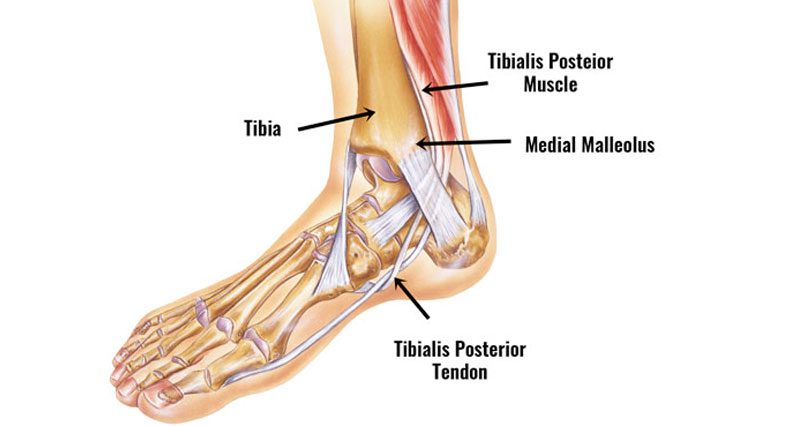POSTERIOR TIBIAL TENDON INJURY
Posterior tibialis tendon injury is a common cause of pain on the back and inside aspect of the ankle and foot. The tendon passes behind the ankle connecting the calf muscle with the bones of the mid foot. It provides stability to the arch of your foot and supports it while walking. Inflammation or a tear of this tendon causes dysfunction, pain and the development of flatfoot. Risk factors are obesity, age > 50, women, Rheumatoid arthritis and professions that require standing for long periods of time.

Symptoms of posterior tibial tendon dysfunction include:
-
Pain on the inside aspect of the ankle
-
Swelling
-
Weakness
-
Flatfoot, which in chronic cases causes pain on the outside of the ankle
-
Trouble with walking or wearing shoes
Activities such as walking, running, and standing on your toes may aggravate the pain. If treatment is delayed there may be rigidity and development of arthritis.
During the medical consultation these symptoms, together with a medical history, will help to diagnose this condition. Imaging tests such as X-rays, MRI, CT and ultrasound scans may be ordered to visualise the tendon and rule out other abnormalities.
Early stages of Posterior tibial tendon dysfunction may be treated with rest, ice, immobilisation, physiotherapy and analgesics. Shoe inserts that support the arch may be recommended. In more serious scenarios, crutches will be provided for walking. Surgery will be necessary if conservative treatments fail. There are different options that will be performed depending on the severity of the pathology:
-
Tenosynovectomy: The inflamed tendon tissue is cleaned and removed
-
Tendon transfer: The damaged tendon is augmented with another foot tendon, usually one of the toe flexors
-
Osteotomy: the heel bone is surgically broken to recreate the arch of the foot
-
Arthrodesis: in chronic and stiff deformities, and when joint degeneration has developed, the bones are realigned and fused to form a single bone
